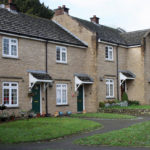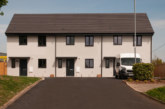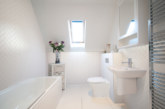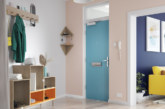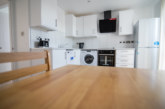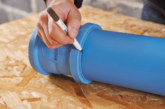
Magna Housing is a community based housing association in the South-west responsible for over 10,000 homes. It’s imperative the HA’s refurbishment programmes balance the needs of residents with day-to-day financial and practical requirements. The move to wall panels for bathroom refurbishments is proving to be a sensible solution in more ways than one, as Scott Beattie, Managing Director of Fibo, tells LABM.
Kitchens and bathrooms are the two most frequently used rooms in the home, so making sure they look good and perform well is a prime responsibility for social housing providers. Both rooms have to cope with steam, heat and water, which all pose challenges for the appearance, condition and cleanliness of walls. While ceramic tiling has traditionally been used to address these issues, problems such as mildewed grouting, loose tiles and splash-marked walls are common.
High-quality wall panels are proving increasingly popular with social housing providers. Design and innovation have made the latest products a genuine choice for modern interiors, while still offering value and convenience.
For Magna Housing, which offers flats, houses and sheltered housing in Dorset and Somerset, a move to high quality wall panels for bathroom refurbishments has been the best way to balance the needs of residents with its ongoing obligations, while also taking the requirements of contractors into consideration. The HA is committed to providing homes in local communities that help people meet their housing needs and ‘make their housing dreams come true’.
Tenants want their homes to look good, be comfortable and easy to maintain. Magna has to meet these needs while keeping an eye on the financial and practical realities. That’s why – after a brief, unsuccessful period of using a cheaper alternative — Magna settled on using high-quality wall panels from Fibo UK for both refurbishment and new-build projects. The panels are made using laminated birch plywood — a high quality 9mm 7-layer WBP Plywood core with a balancer laminate on the reverse, making the panels rigid, easy to handle and long lasting.
Low maintenance solution
Denise Rhodes, Contract Manager for Magna Housing, comments: “We first came across Fibo in a copy of LABM magazine — and have now used the panels in more than 100 bathroom refurbishments in the past year. Efficiency and high quality are key objectives when we’re refurbishing the properties. Our residents have been really pleased with the wall panels — they look great, are low maintenance and are quick to fit, which means less disruption. We also use the panels for ‘boxing-in’, and as bath panels, saving further time on the job.”
Magna is now also considering using wall panels in its kitchens. Traditionally kitchen tiling is used as a splashback, one or two tiles high — leaving a gap between the top of the tiles and the underneath of the cupboards. This gap, usually plain plasterboard, can quickly stain and become discoloured due to grease splashes and steam. But wall panels can easily be fitted from the work or stovetop to the cupboard or even ceiling, edge to edge. The area not only looks better, it’s more practical, requiring just a quick wipe down to stay clean, so the walls do not get damaged and need a repaint. Also, there is no grout to discolour or mildew to harbour germs.

Installation is simple. Panels can be up to five times faster to fit than tiles and can be installed by any competent builder or tradesperson, whereas re-tiling is time-consuming and expensive. The old tiles have to be removed, which usually damages the wall. This then has to be repaired to give an even surface for the new tiles, which often means re-plastering, and even more delay.
In contrast, wall panels can be fitted over existing tiles, fixed directly to the existing wall, or stud partitioning. Fibo’s Aqualock fixing system means panels can be slotted into place by one person — no need for a whole team of plasterers and tillers. The panels click together easily, are fixed with screws and finished with sealant between the joints to create a completely waterproof system. There’s no grouting to apply and there’s no need for specialist skills or equipment. The process is less disruptive too — many projects can be completed in a day, so the tenant does not need to move out.
Personalising a property
Denise adds: “Panels from Fibo’s Traditional range in Frost Blue and Toscana have always gone down well, and we’ve also recently started using Sugar Sparkle from the Traditional Plus range, which is proving popular. The residents get a choice out of all three colours, and their feedback has been excellent.”
Offering a choice of styles helps tenants feel they have a say in making the property a home. Panels can be plain, patterned or have a tiled finish, with colours ranging from neutral stone effects to bold colours or striking blacks and greys. And because it’s easy to drill into panels, it’s possible to add hooks and handrails without damaging the surface.
This has been a major benefit for Magna Housing: “The main thing that stood out for us was how strong and robust the panels are. They can take the weight of adaptation products,” explains Denise. “The thinner panel we used previously couldn’t handle them: we had to fit ply behind the wall first.”

